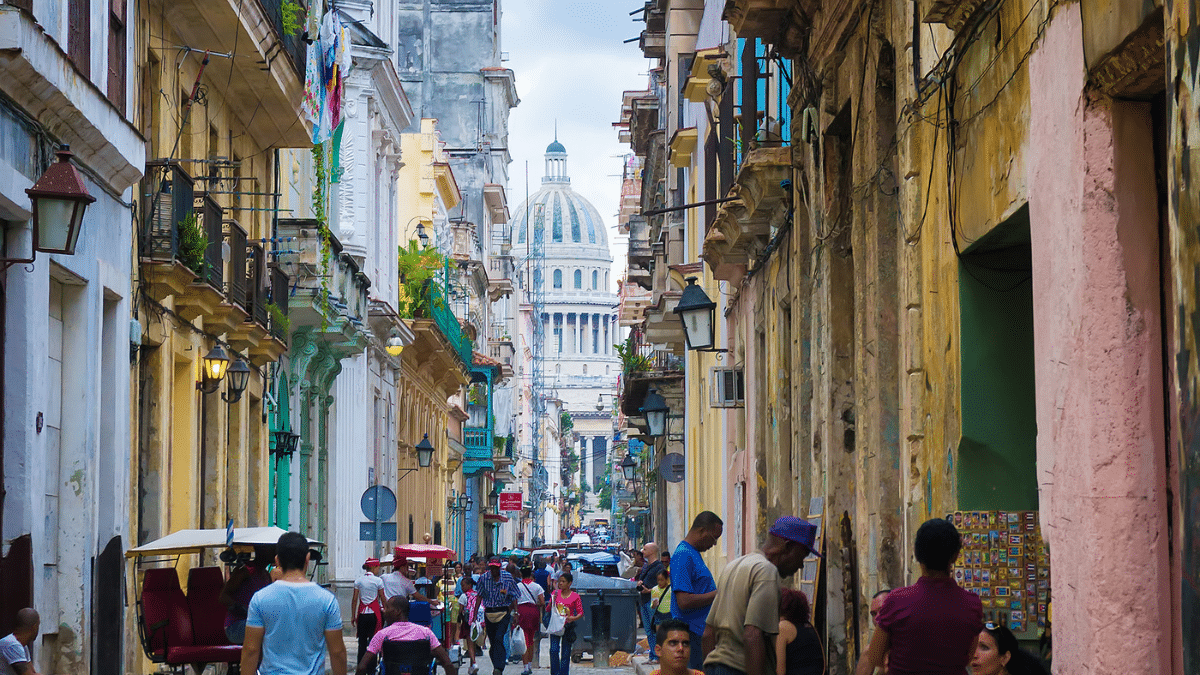50 Facts About Cuba (You Won’t Believe)
How well do you know Cuba, really? With its fascinating and turbulent political history, diverse mix of cultural influences, and captivating people and places, there’s just nowhere on earth like Cuba.
Get to know this unique Caribbean island a little better by diving into some of these 50 almost unbelievable facts about Cuba. We’ve added a mix of our favorite details about Cuba’s past and present, including some Cuba facts we’re sure you’ve never heard before!

Facts About Cuba
1. Che Guevara Wasn’t From Cuba
While Che Guevara is one of Cuba’s most famous figures, he actually is not Cuba. Ernesto “Che” Guevara de la Serna was born in Argentina to a well-to-do family and was trained as a doctor. His nickname, che, is an Argentina slang word similar to “dude.”
Read along about his famous pre-revolution motorcycle trip across the Americas in his Diarios de Motocicleta, which he wrote as he traveled. Motorcycle Diaries was later turned into an award-winning movie starring Gael Garcia Bernal – a favorite if you love road trip movies or just want to learn more about this polarizing historical figure.
2. Cuban hospitals treated the victims of Chernobyl
How is this for unbelievable facts about Cuba: after the nuclear incident in Chernobyl in 1986, Cuban hospitals welcomed a number of patients experiencing health issues. This unexpected part of Cuban medical history is captured beautifully in the Cuban movie El Traductor, which is absolutely worth a watch whether you’re interested in this moment in time or just want to learn more about Cuba.
José actually has memories of interacting with some of the children that were undergoing treatments at Cuban hospitals when he was a child and had to go to the hospital for some routine medical procedures.
Read More: 7 Movies You Need to Watch Before Traveling to Cuba
3. Christopher Columbus said that Cuba was “the most beautiful land that human eyes have ever seen”
Columbus navigated along Cuba’s northern coast during his first journey to the Americas in 1492, writing this famous line in his journals after laying eyes upon the shores of the province of Holguin. He also recorded seeing the famous El Yunque tabletop mountain outside of Baracoa.
This is one of my favorite lesser-known facts about Cuba!
4. The first city founded in Cuba was Baracoa
Baracoa was founded in 1511 as the first city founded on the island of Cuba. It was among the first 15 cities founded by the Spanish in the Americas.
5. Ernest Hemingway’s cats remain at Finca Vigía
Well… not Ernest Hemingway’s exact cats, but their descendants! Hemingway was well-known for loving cats and had a number of them at any given time living on his property on the outskirts of Havana.
6. Baseball was introduced in the 1860s by Cubans returning from studying in the United States and by U.S. sailors stationed on the island
The number one sports obsession of Cubans is baseball, and the sport has a long history on the island. Paying a visit to the esquina caliente – the “hot corner” where excited fans debate baseball every day is one of the best free things to do in Havana.
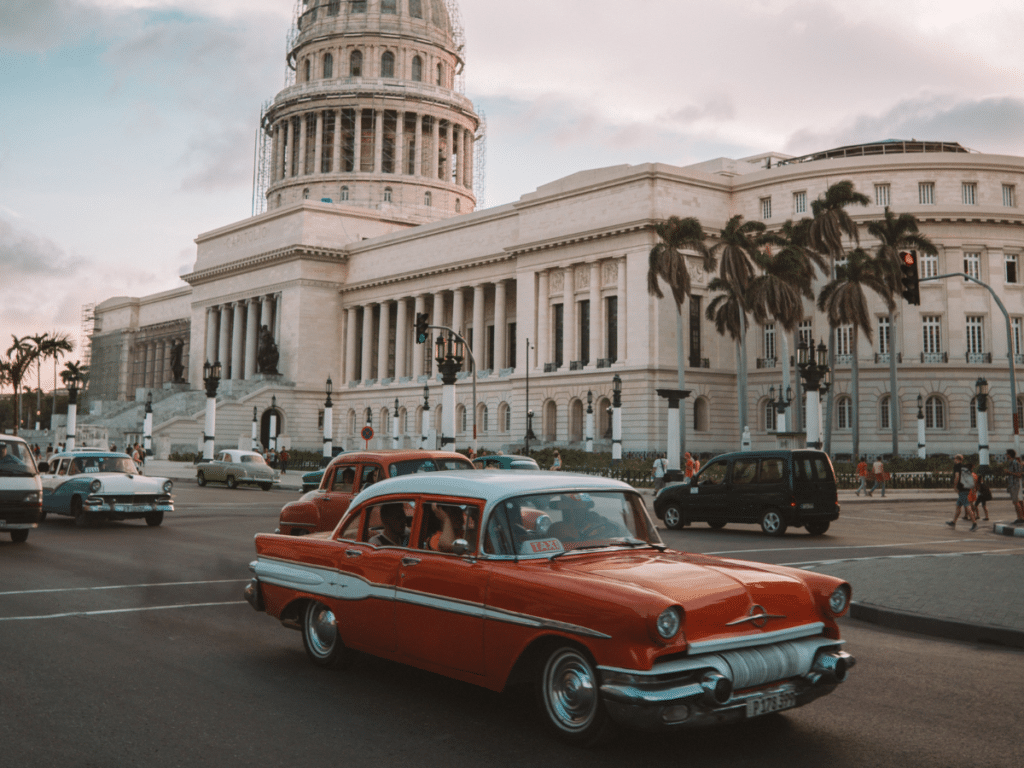
7. Fulgencio Batista and Fidel Castro were from the same part of Cuba
Fidel Castro is from Birán, Cuba, while the dictator he ousted from power in the Cuban Revolution, Fulgenio Batista, is from Banes, Cuba. Both of these small towns are in the eastern province of Holguin.
Now for a fun fact about us rather than more facts about Cuba: one of José’s mother’s last names is Batista, and she happens to be from the same small town in Holguin as Fulgencio Batista. We joke that he may be a long-lost uncle.
8. The famously beautiful beach located on Cayo Guillermo, Playa Pilar, is named after Ernest Hemingway’s boat
Considered one of the most beautiful beaches in the Caribbean, Playa Pilar on Cayo Guillermo was named after Ernest Hemingway’s boat after he made the pristine spot famous in his novel Islands in the Stream.
9. Fidel Castro survived over 600 assassination attempts
Many of the assassination attempts against Fidel Castro were proven to be perpetrated by the CIA, whether at the time of their occurrence or later in declassified documents.
One of the most infamous attempts occurred in 1960 when the CIA spiked a box of his favorite cigars with botulinum toxin. Another famous attempt included a poisoned scuba diving suit, while planting an explosives-laced seashell near Castro’s favorite dive site was another plan, apparently abandoned as impractical before it could be attempted.
Travel Essential
Don’t think about traveling to Cuba without a good VPN (Virtual Private Network). Using a VPN while connecting to the internet is an easy way to keep your personal information safe from hackers and trackers. We’ve used NordVPN for years and couldn’t recommend it more – it’s a must for safety online, especially in Cuba.
10. The Cuban sandwich is not originally from Cuba
The Cuban sandwich was actually first created in the United States, and most Cubans that live on the island have never even heard of a “Cuban sandwich” before. Don’t ask anyone from Miami or Tampa where the Cuban sandwich first originated, as the details of the sandwich’s creation story are hotly debated to this day.
As many travelers in Cuba come to the island expecting to find Cuban sandwiches everywhere, many savvy shop owners now sell a version of the sandwich.
11. Salsa originated in Santiago de Cuba
Cuba’s “eastern capital” of Santiago de Cuba has birthed many musical traditions, among them salsa, son, timba, bolero, and others. In many ways, these sounds and rhythms are the foundation of most Spanish-language we hear today.
12. The world’s oldest baseball stadium in continuous use is in Cuba
Palmar de Junco Stadium in the province of Matanzas saw its first game in 1874, making it the oldest baseball stadium in continuous use in the world.
13. Cuba had two official currencies for decades
In 1993, Cuba legalized the use of the U.S. dollar on the island, effectively creating a dual-currency economy. In 1994, Cuba created a currency called the Cuban Convertible Peso (CUC) pegged against the dollar; these eventually outstripped the use of U.S. dollars on the island.
Simultaneous use of the CUC and the Cuban peso (CUP) lasted until 2021 when the Cuban government unified the currency. The currency currently used in Cuba is the Cuban peso.
Read More: Currency in Cuba: A Local’s Guide for Travelers
14. Cuba is the largest island in the Caribbean, and the 17th largest island nation in the world
Just over 95 miles off the coast of Key West, Cuba is significantly larger than even its neighbor island of Hispaniola, the island that is home to both the Dominican Republic and Haiti.
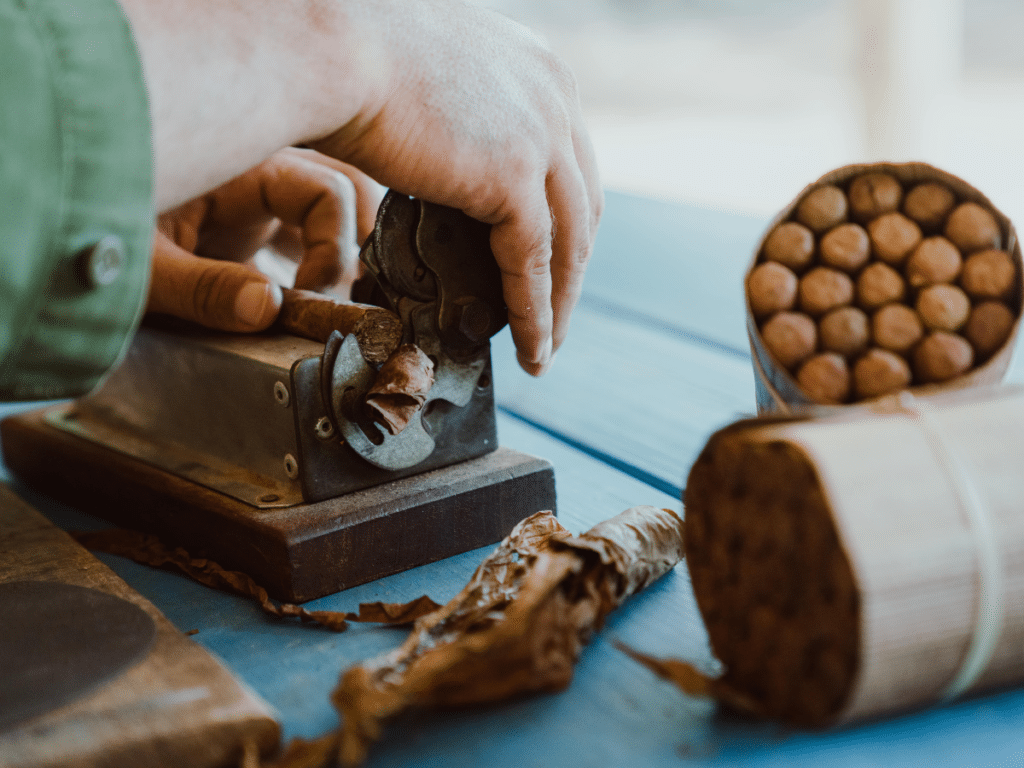
15. Che Guevara smoked cigars dipped in honey
Why? Che Guevara suffered from asthma, and dipping his cigars in honey seemed to help alleviate the issues of smoking while having asthma.
You’ll certainly hear interesting facts about Cuba like this and more on a trip to Viñales, home to some of the best tobacco farms in the country. When we visited Viñales last we even were given honey to try on our cigars!
Read More: Havana to Viñales Day Trip: Ultimate Local’s Guide
16. Cuba is home to two main groups of indigenous peoples: Tainos and Guanahatabeyes
Arawak-descended Taino peoples occupied much of the Caribbean, especially in Cuba, Hispainola, and Puerto Rico prior to the Spanish conquest. While most Cubans have at least some indigenous Cuban heritage, populations of indigenous peoples were decimated by Europeans, meaning that much of the language and cultural heritage of these groups was lost.
17. We still use many words that originated in the Taino language today, both in English and Spanish
Among the Taino words used today are the following:
- hurricane / huracán
- barbeque / barbacoa
- canoe / canoa
- hammock / hamaca
18. Cuba is home to the smallest frog in the world
The Monte Iberia dwarf frog is a critically endangered species endemic to the eastern rainforests of the province of Holguin. Only officially identified as a species in 1993, these frogs measure just 9.6–10 mm, less than half an inch!
Travel Insurance
Cuba requires that all travelers have proof of a comprehensive travel insurance policy in order to enter the country. Check out our guide to travel insurance for Cuba for more details. We recommend these brands for Cuba travel insurance:
- Visitors Coverage: Coverage for Cuba travel available to citizens of all countries, though not currently available to residents of New York and Maryland in the United States.
- Insubuy: Coverage for Cuba travel available to citizens of all countries and states of the United States.
19. Cuba has one of the highest literacy rates in the world
Cuba has an estimated literacy rate of 99.71%, the highest in Latin America. Following the Cuban Revolution, a significant literacy campaign sent young teachers from around the country to rural locations to help bring literacy to communities that previously had no access or limited access to schooling.
20. Cuba exports doctors
Immediately after the Cuban Revolution in 1959, Cuba began sending doctors abroad in a humanitarian program that continues today. At the height of the program, more than 50,000 Cuban doctors were at work in countries around the world.
21. Visitors can still explore the camp used by Fidel Castro and his band of revolutionaries at Comandancia de la Plata
This is one of those little-known facts about Cuba that can help you plan your itinerary! Stop at the campsite of the band of revolutionaries deep in the Sierra Maestra mountain range on your way up Cuba’s highest peak, Pico Turquino.
You’ll get a chance to see Che Guevara’s field hospital, Fidel Castro’s makeshift house/cabin, and even the radio station the group used to transmit their messages around the island.
Read More: Hiking Pico Turquino + 5 Best Hikes in Cuba
22. Most Cuban citizens are part of a community organization called the Cómite de Defensa de la Revolución
After the creation of the Cómites de Defensa de la Revolución (CDR), or Committees for the Defense of the Revolution, in 1960, each neighborhood in Cuba created their own branch of the community organization. When they were created, they were designed to provide “a collective system of revolutionary vigilance” throughout the country.
What to Pack for Cuba
Check out our Ultimate Cuba Packing List to help you pack for your trip – we’re sharing exactly what to bring to Cuba and what we never travel without.
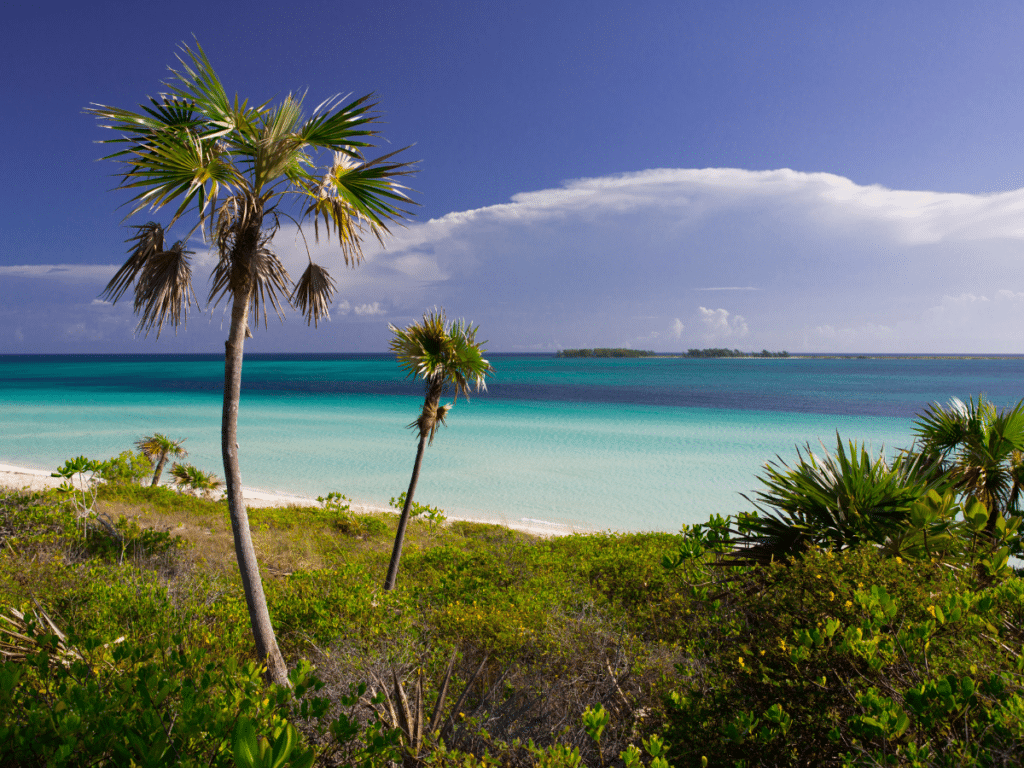
23. Jardines de la Reina is known for its oversized sharks
One of the last major protected areas in the Caribbean Sea, Jardines de la Reina is an archipelago off the southern coast of Cuba and a protected marine park. It has long been functionally off-limits to tourism. Its strictly-protected status has helped sharks grow to unprecedented size here.
24. Jardines de la Reina only allows a few hundred visitors a year
While Jardines de la Reina is now accessible to travelers, it only allows in a few hundred visitors a year, who are exclusively allowed to access the area on live-aboard cruises from just one approved travel company.
25. Guantánamo Bay is the longest-standing overseas U.S. naval base in the world
Established in 1903 after the Spanish-American War, the detention center has been the site of well-documented atrocities and illegal detainments. Cuba considers continued U.S. use of the land an illegal occupation of Cuban territory.
26. The United States pays Cuba for the use of Guantánamo Bay every year, but Cuba never cashes the checks
The payment? A paltry $4,085 annually for the use of a 45-square-mile military base. Established in 1903, the lease for the land was made permanent until both governments agree to break it.
27. Fulgenio Batista, the dictator overthrown by Fidel Castro, escaped from Cuba with suitcases filled with $300 million in cash
When Batista fled Cuba in the early morning hours of January 1st, 1959 it marked the victory of the Cuban Revolution. He later spent most of the rest of his life in the United States.
28. Cuba has nine UNESCO World Heritage Sites
Seven locations in Cuba are protected as sites of cultural importance, while two locations are considered sites of natural importance. These include the following:
- Old Havana and its Fortification System – this was Cuba’s first UNESCO World Heritage Site
- Trinidad and the Valley de los Ingenios
- Viñales Valley
- The Historic Center of Cienfuegos
- The Historic Center of Camagüey
- Castillo de San Pedro de la Roca in Santiago de Cuba
- Southeastern Cuba’s first historic coffee plantations
- Desembarco del Granma National Park
- Alejandro de Humboldt National Park near Baracoa
29. Cuba’s patron saint is La Virgen de la Caridad del Cobre, o known as La Cachita
Visiting the church that holds the statue of La Virgen de la Caridad del Cobre makes for a popular day trip from Santiago de Cuba. The site has been visited by a number of international politicians and religious dignitaries, including Pope Francis on his last trip to Cuba.
30. Cuba is known as the sugarbowl of the world
Sugarcane became one of Cuba’s most important crops to be exported from Cuba in the 1700s and remains an important and widely-cultivated crop today. See some of the most important sugar plantations in the country during your trip to Trinidad and the neighboring Valle de los Ingenios (Valley of the Sugar Mills).
Read More: 10 Best Things To Do in Trinidad, Cuba
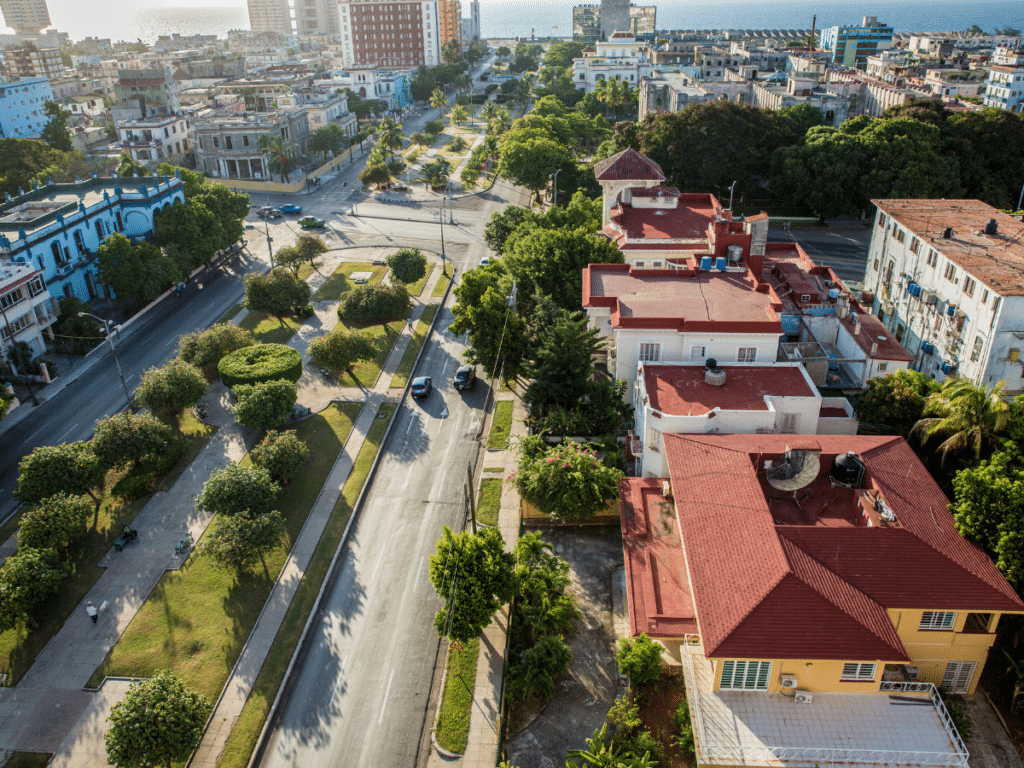
31. Bacardí was founded in Cuba, but the company’s Cuban assets were seized after the Cuban Revolution
These facts about Cuba might not surprise you, especially if you’ve ever visited any of the Bacardí plants in the Caribbean. You can still see the repurposed Bacardí building in central Havana today, though Bacardí has its headquarters in Bermuda.
32. Cuba is home to The Hershey Train, built by The Hershey Company of chocolate fame
During the height of Cuba’s sugar production prior to the Cuban Revolution, The Hershey Company constructed a train between Havana and Matanzas, used to transport sugar to be sent through Havana’s port and on to Hershey production facilities. The train is still in operation today, and is a cheap, local way to get from Havana to Varadero.
33. Before the U.S. Embassy in Havana was reopened in 2015, a small United States Interests Section was considered part of the Swiss Embassy
The United States and Cuba formally severed diplomatic ties in 1961, but in 1977, a small diplomatic staff returned to the former U.S. Embassy, then called the U.S. Interest Section (USINT). The diplomats were technically credited to the Swiss Embassy, though worked from their own building.
During the Obama Administration, the U.S. Embassy was reopened as an embassy in 2015.
34. U.S. travelers can travel to Cuba
Many U.S. citizens think they can’t travel to Cuba, but that isn’t the case! Former President Obama’s policy changes toward Cuba made it easier than ever for U.S. citizens to travel to Cuba. Make sure to check out our guides for U.S. citizens travelers to Cuba if you want to travel to Cuba from the United States.
35. Cuban soldiers fought in the Angolan Civil War from 1975-1991
Cuban soldiers supported the pro-communist People’s Movement for the Liberation of Angola (MPLA) in the struggle, which erupted after Angola’s independence from Portugal in 1975.
This is another one of those interesting facts about Cuba that intersects with our own story. José’s father was stationed in Angola during the war as part of his compulsory military service, something that is still required of men in Cuba today.
36. At its narrowest point, Cuba is just 19 miles (31 km) wide
You’re never far from the incredible beaches in Cuba, but at the island’s widest point, it is 119 miles (191 km) wide.
37. The nation of Cuba is more than just one island – Cuba comprises approximately 1,600 islands and cays
Besides the main island of Cuba, Isla de la Juventud, the “Isle of Youth,” is the second largest island in the nation, with a population of around 80,000 residents. The tiny cays along the northern coast of the main island of Cuba are home to some of the country’s most beautiful beaches.
38. On a clear day, you can see Haiti from the Punta de Maisí on the island’s far eastern end
There are an estimated 300,000 Cuban of Haitian descent, and Haitian Creole is the second most widely-spoken language in Cuba after Spanish. Many Haitians migrated to Cuba after the country’s devastating 2010 earthquake.
Travel Essential
Don’t think about traveling to Cuba without a good VPN (Virtual Private Network). Using a VPN while connecting to the internet is an easy way to keep your personal information safe from hackers and trackers. We’ve used NordVPN for years and couldn’t recommend it more – it’s a must for safety online, especially in Cuba.
39. The southernmost point of Key West is just over 95 miles to the coast of Cuba.
While Key West is less than 100 miles from the coast of Cuba, the distance from Key West to Havana is about 105 miles. The distance from Miami to Havana is just over 225 miles.
40. Cuban citizens enjoyed a preferential immigration status in the United States known as Wet Foot, Dry Foot until 2017
As part of the Obama Administration’s policy changes towards Cuba, he eliminated this preferential immigration status, which had led many Cubans to risk their lives crossing borders and oceans to reach the United States.
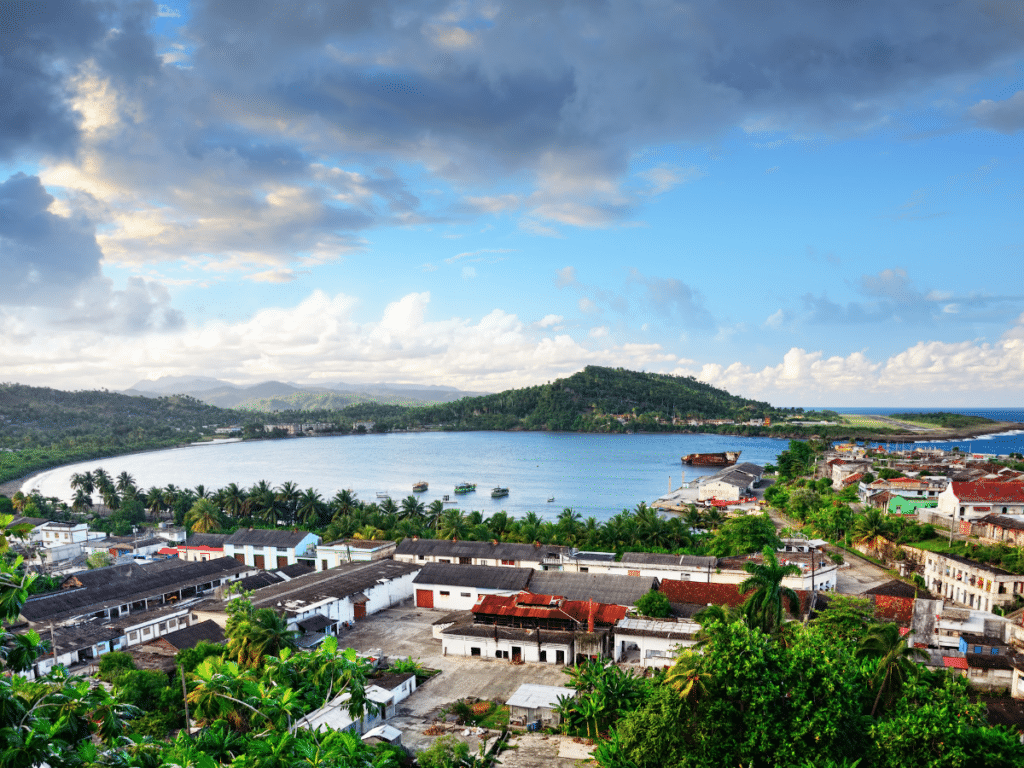
41. The music of famed Cuban singer Celia Cruz was once banned from the radio in Cuba
Celiz Cruz and other Cuban singers who left the island or spoke out against the Cuban government were quietly but noticeably absent from Cuban radio stations for years, until around 2012.
42. Coppelia is Havana’s most famous ice cream parlor, and a Cuban ice cream brand
Located in the park at the bustling corner of Calle 23 and Calle L in the neighborhood of Vedado, Coppelia is a long-standing Havana institution that first opened its doors in 1966. Other famous facts about Havana and its most famous ice cream parlor are that it used to carry 26 unique ice cream flavors – it now sells Vedado ice cream rather than Coppelia-brand ice cream.
43. Following the collapse of the USSR, Cuba entered a period of severe economic hardship known as El Período Especial – The Special Period
El Período Especial occurred from 1991 through the mid-1990s and took its name from a Fidel Castro speech in which he called these years “a special period in a time of peace,” comparing the hardships of the period to those of wartimes.
It’s estimated that adult Cubans lost between 5-25% of their body weight due to food scarcity and shortages. It’s one of the facts about Cuba and its history that most Cubans would love to forget.
44. Havana’s cemetery Necrópolis Cristóbal Colón, Colón Cemetery, is among the most beautiful and historic cemeteries in the world, comparable to Recoleta in Buenos Aires and Père Lachaise in Paris
The gorgeous cemetery is the permanent resting place of prominent figures like renowned ballerina Alicia Alonso, Ibrahim Ferrer Planas of the original Buena Vista Social Club, and Cuban chess champion Jose Raul Capablanca, whose tomb is in the shape of a white marble chess piece. Taking a walk through this impressive spot is among the best things to do in Havana.
45. Cuba is the most populous country in the Caribbean
Despite being the most populous Caribbean country, the island of Hispaniola – home to both Haiti and the Dominican Republic – is the most populous island in the Caribbean.
46. Domino is the official game of Cuba
This is one of the facts about Cuba that will come as no surprise; you’ll see people playing dominoes on street corners and porches across the island and whenever you find populations of the Cuban diaspora.
47. Cuba is home to the world’s smallest bird
Just as Cuba is home to the world’s smallest frog, it is also home to the world’s smallest bird, known as the Bee Hummingbird. These tiny birds are just 2 ¼ inches long and weigh less than a dime!
They’re endemic to Cuba but can be found all around the island. You’ll have the best chance of spotting one in the Ciénaga de Zapata swampland, in Alejandro de Humboldt National Park, and in the forests of the eastern province of Holguin.

48. Cuba’s tallest mountain is Pico Turquino, located in the Sierra Maestra mountain range
Pico Turquino measures 6,476 ft (1974 meters) at its summit. It is the 7th tallest mountain in the Caribbean, with mountains in Haiti, Jamaica, and the Dominican Republic surpassing it. This is one of the fun facts about Cuba to put to the test yourself, as submitting Pico Turquino is among the best hikes in Cuba.
49. Cubans couldn’t buy or sell houses after the Cuban Revolution until 2011
This is one of those facts about Cuba that can be hard to believe, but Cubans were unable to buy or sell real estate until 2011 when private ownership of properties was first recognized after the Cuban Revolution. This led to many Cubans permutando, or trading, properties, which was an approved-of practice. You’ll still find Cubans who trade houses to this day, though many prefer to buy and sell.
50. Cubans couldn’t leave the country without prior permission from the Cuban government until 2013
Now, Cubans can come and go freely from the island once they are in possession of a passport.
Cuba Facts
From details about Cuban history and culture to fun facts about Cuba that relate to its people and places that you’d never expect, these are some of our very favorite facts about Cuba. What other facts about Cuba do you know that we left off our list?
Interested in learning more unique and unbelievable facts about Cuba? Check out our next article: 40 Interesting Facts About Havana, Cuba
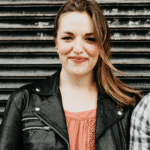
Carley Rojas Avila is a bilingual travel writer, editor, content marketer, and the founder of the digital travel publications Home to Havana and Explorers Away. She is a serial expat and traveler, having visited 40+ countries and counting. Carley has written for publications like Travel + Leisure, MSN, Associated Press, Weather Channel, Wealth of Geeks, and more. Find her front row at a Bad Bunny concert, befriending street cats, and taste-testing every pizza in Havana.

